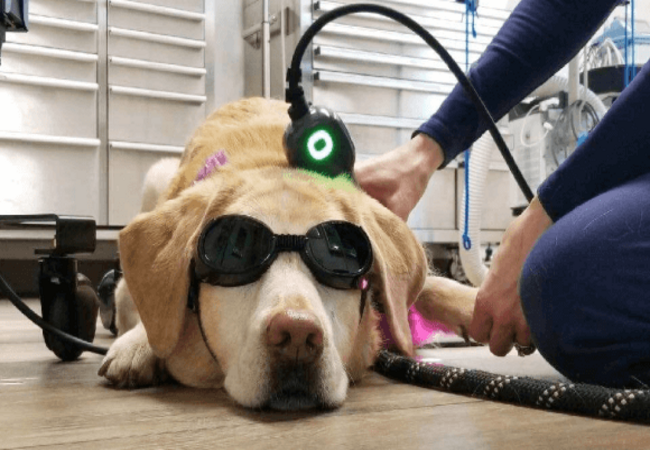Vet-Approved 2025 Guide: Laser Therapy for Dogs – Pain, Healing & Safe Protocols 🐾🐶💉

In this article
Vet-Approved 2025 Guide: Laser Therapy for Dogs – Pain, Healing & Safe Protocols 🐾🐶💉
By Dr. Duncan Houston BVSc
Laser therapy—also known as low-level or “cold” laser therapy—is a non-invasive treatment that uses specific light wavelengths to target pain, inflammation, and healing in dogs. Known as photobiomodulation, this veterinary therapy harnesses light energy to stimulate cellular repair and comfort. In this 2025 guide, written by Dr. Duncan Houston BVSc, you'll discover what laser therapy is, how it works, conditions it treats, benefits, risks, session protocols, home use considerations, and companion tools from Ask A Vet, for a smoother recovery journey. 🐕✨
🔍 What Exactly Is Laser Therapy?
Laser therapy uses red or infrared light to penetrate tissues and trigger biological responses. It’s called photobiomodulation—the light boosts ATP production, reduces inflammation, and accelerates healing. Class IIIB cold lasers are common; they’re gentle but effective. High-powered Class IV lasers penetrate deeper but need professional oversight to avoid burns. Most veterinary facilities use cold lasers that don’t heat tissue.
🐾 Why Choose Laser Therapy?
- 🚑 Pain Relief & Anti-Inflammation: Reduces joint pain, arthritis, soft tissue injury discomfort.
- 🩹 Speeds Healing: Enhances blood flow and tissue repair—great for wounds, incisions, lacerations.
- 🦴 Supports Orthopedic Recovery: Helpful post-fracture or surgery (TPLO, CCL).
- 🌿 Drug-Free Option: Ideal for dogs that can’t tolerate NSAIDs or opioids, such as those with liver or kidney disease.
- 📈 Improves Quality of Life: Quick responsiveness seen in mobility and comfort, enhancing overall wellness.
✅ Conditions Treated with Laser Therapy
Laser therapy serves as an adjunct for many conditions:
- Osteoarthritis and chronic joint pain.
- Surgical incisions—TPLO, mass removal healing.
- Wound healing—bites, lacerations, lick granulomas, hot spots.
- Soft tissue injuries—sprains, strains, tendonitis.
- Neuromuscular or nerve pain relief.
💡 How Does It Work?
Laser light targets mitochondria in cells, boosting ATP production, increasing microcirculation, reducing inflammatory mediators, and easing pain signals. Essentially, it nudges cells toward healing mode. Cold lasers (class IIIB) penetrate shallower; class IV lasers go deeper and faster.
🛠️ What to Expect During a Session
- Duration: Range 3–30 minutes; simple wounds heal fast ("a couple minutes"), multi-joint needs near an hour.
- Protective Gear: Dogs may wear goggles; humans too. The laser wand is held steady over the treatment area.
- Sensation: Almost always painless; dogs feel gentle warmth or tingle. Many relax or fall asleep.
🗓️ Treatment Frequency & Phases
Treatment protocols vary by condition:
- Acute injuries: daily sessions until recovery, then taper off.
- Chronic conditions: induction phase (several sessions/week), moving to maintenance (biweekly/monthly).
- Session count: Acute (5–7 sessions), chronic (10–15+) depending on response.
🔍 Evidence & Effectiveness
Evidence, though growing, is still evolving:
- A 2020 study showed arthritis pain reduction and quality-of-life improvement post 8-week protocol.
- Wound healing studies show mixed results—some positive, others neutral.
- Experts caution that many studies have small sample sizes and lack controls, though clinical experience is promising.
⚠️ Risks & Safety
- Burns possible if used improperly—professional training and correct dosages are essential.
- Avoid direct use over tumors, eyes, reproductive tissues, or bone growth plates.
- Protective eyewear is mandatory for safety.
- Rarely causes mild skin irritation or light sensitivity.
Overall, side effects are minimal and therapy is well tolerated.
🏡 Using a Laser at Home
Home-use laser devices exist, but:
- Only FDA-cleared or veterinary-grade lasers should be used.
- Follow manufacturer instructions for dosage and safety—measure area, adjust joules/cm², and time accordingly.
- Keep goggles on your dog and yourself.
- Consult with your vet for condition, schedule, and monitoring guidelines.
- Stop use and consult a vet if skin irritation or signs of burning appear.
Home laser therapy suits calm dogs whose treatment path is clearly defined and supervised.
🧬 Breed & Dog‑Type Considerations
- Senior dogs: Joint therapy is common, but monitor skin thickness variations.
- Short-coated breeds: Light penetrates directly but monitor skin temperature.
- Skin-fold breeds: Avoid deep folds without vet supervision.
- Post‑op cases: Use over incision lines only when the wound is closed and healed.
🛠️ Supportive Enrichment & Tools
Combining laser therapy with emotional support boosts healing:
- Ask A Vet: Virtual consults to monitor progress and adjust laser schedule or address concerns.
📋 When to Consult Your Veterinarian
Seek professional input if you notice:
- Skin redness or burn signs post-session
- Worsening mobility, pain, or abnormal swelling
- Unexpected behavioral changes after therapy
Vet guidance ensures safety, resets dosage, and combines therapies as needed.
🏁 Final Takeaways
In 2025, laser therapy is a safe, gentle, drug-free adjunct in veterinary care. When guided by veterinarians and delivered with proper protocols, it's effective for pain relief, healing, and mobility. With supportive resources like Ask A Vet, plus calming products from, your dog’s therapeutic journey is both advanced and caring. Let light guide their path to comfort! 🐶❤️
For tailored advice or remote vet support, visit Ask A Vet. Your pup deserves the best—shine on! 🐾✨


